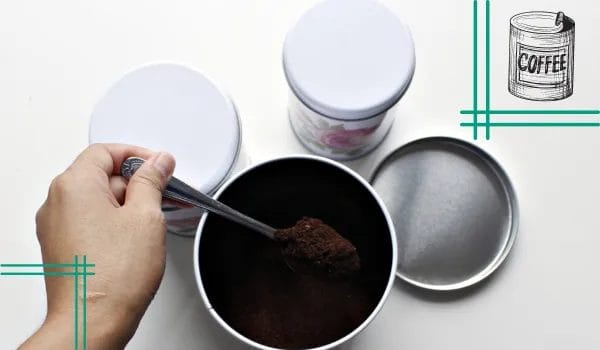Is Gum Biodegradable? The Environmental Impact Of Chewing Gum On The Planet
Unwrap the truth behind your favorite chew: discover the surprising environmental footprint of gum and its journey after you spit it out!
Do you ever wonder where your chewed gum ends up after you spit it out? Here’s an alarming fact: most chewing gums are not biodegradable and can persist in the environment for over 100 years.
This blog will shed light on the environmental impact of chewing gum, how it contributes to pollution, and how we can make more sustainable choices. Keep reading to find out why that piece of gum matters more than you think!
Key Takeaways
- Most chewing gums are not biodegradable and can persist in the environment for over 100 years.
- Chewing gum contributes to pollution through littering and potential harm to wildlife.
- There are eco – friendly alternatives available, such as biodegradable gum brands like Nuud Gum, Glee Gum, Simply Gum, and Chicza.
Composition of Modern Chewing Gum

Modern chewing gum is composed of a variety of ingredients, including a secret gum base, sweeteners like sugar or artificial sweeteners, artificial colors and flavors, and preservatives.
Gum Base: A Trade Secret
Gum base is the sticky part of chewing gum. It helps make the gum chewy. But what goes into making it? That’s a trade secret! Gum makers keep this hidden. Though they may use things like rubber, wood glue, and oil from plants to make it.
Get Your Hand on Your Eco-Friendly Living Starter Guide!
Plastics get used too, which means your gum could have bits of plastic in it!
Is Chewing Gum Biodegradable?

Most chewing gum is not good for our earth. It’s made of things that won’t break down in nature. We call these non-biodegradable materials. They include stuff like paraffin wax and ingredients based on oil from the ground.
When people throw used gum on sidewalks, desks or streets, it makes a sticky mess that stays there.
Even worse, we don’t know how long it takes for the plastic in gum to break down. Some parts of chewing gum, like butyl rubber polymer, never go away at all. The harm to our planet can last a very long time because most people do not get rid of chewed gum in the right way every year.
Environmental Impact of Chewing Gum

Chewing gum has a significant environmental impact, contributing to pollution through its improper disposal and potential harm to wildlife.
Chewing Gum as a Litter Problem
Chewing gum is a big litter issue. A lot of people throw used gum on the ground. About 80-90% of gums are not thrown away right. Each year, tons of gum gets added to the trash stream.
This makes the streets dirty and ugly. It sticks on sidewalks, desks, and streets too. Even land and water animals can think it’s food and eat it by mistake! Some gums even have harmful stuff like phthalates in them that can make these animals sick.
Potential Harm to Wildlife
Chewing gum can hurt animals. They may think it is food and eat it. Sometimes, the gum has bad stuff like phthalates in it. These things can make wildlife sick or even kill them. Animals on land and in water are at risk from chewing gum pollution.
This is a big problem that we must solve to keep all living creatures safe.
Non-renewable Resource Waste
Chewing gum contributes to non-renewable resource waste. It is made from materials like paraffin wax and petroleum, which are not sustainable. The production of chewing gum requires the use of fossil fuels, leading to environmental pollution.
Transportation of these ingredients also contributes to air pollution and climate change. Improper disposal adds to the problem, with thousands of pounds of gum ending up as litter each year.
This further wastes non-renewable resources that could have been used more efficiently. Thankfully, there are some companies that have developed biodegradable alternatives to reduce this waste and lessen our impact on the environment.
Solutions to Chewing Gum Pollution

Government and NGO initiatives, corporate solutions, and personal action steps offer effective ways to combat chewing gum pollution.
Government and NGO Initiatives
Many governments and non-governmental organizations (NGOs) have taken action to address the environmental impact of chewing gum. Here are some initiatives:
- Singapore’s Chewing Gum Ban: In 1992, Singapore implemented a ban on chewing gum due to its negative impact on the cleanliness of public spaces. However, in 2004, limited quantities of chewing gum were allowed for therapeutic purposes.
- The Chewing Gum Action Group (CGAG): This UK-based organization works to highlight the issue of gum litter and promote responsible disposal. They collaborate with local authorities, schools, and businesses to raise awareness about the problem.
- Gumdrop: This innovative company collects used chewing gum from bins and transforms it into new compounds that can be used in various products like park benches and shoe soles.
- TerraCycle’s Chewing Gum Recycling Program: TerraCycle offers recycling solutions for difficult-to-recycle items, including chewing gum. They provide specially designed collection boxes for individuals and organizations to send their used gum for recycling.
- Environmental Education Programs: Many governments and NGOs run educational campaigns to inform people about the environmental consequences of gum pollution and encourage responsible disposal.
- Research Funding: Some governments and foundations invest in research projects aimed at finding more sustainable alternatives to conventional chewing gum materials or improving waste management solutions.
Corporate Solutions
Companies have taken steps to address the environmental impact of chewing gum. Here are some corporate solutions:
- Gumdrop: This company recycles chewing gum into new compounds for the rubber and plastics industry.
- TerraCycle: They also offer a chewing gum recycling program, where collected gum is turned into new products.
- Simply Gum: This brand offers biodegradable chewing gum made with natural ingredients like organic raw cane sugar and vegetable glycerin. Their packaging is also sustainable, using recyclable cardboard and biodegradable cellophane.
- Chicza: They produce organic and biodegradable gum made from chicle, a sap harvested sustainably from Mexican rainforest communities.
- Glee Gum: Another option is Glee Gum, which is made with chicle and sweetened with natural sugar instead of artificial sweeteners.
- Chewsy: This brand uses only plant-based substances in their environmentally friendly chewing gum, avoiding synthetic polymers that contribute to plastic pollution.
Personal Action Steps
To help reduce the environmental impact of chewing gum, here are some personal action steps you can take:
- Choose biodegradable gum brands: Look for biodegradable options like Nuud Gum, Glee Gum, Simply Gum, and Chicza. These brands use plant-based substances that break down more easily in the environment.
- Dispose of gum properly: When you’re done chewing, wrap the gum in a piece of paper or tissue and throw it in the trash. Avoid spitting it out on the ground or sticking it under tables or chairs.
- Support recycling initiatives: Some companies, like TerraCycle, have chewing gum recycling projects where they turn used gum into new products. Look for these initiatives and support them by participating in their recycling programs.
- Educate others: Spread awareness about the environmental impact of chewing gum and the importance of proper disposal. Encourage your friends and family to choose biodegradable options and dispose of their gum responsibly.
- Reduce overall consumption: Cutting back on plastic-based gums can help reduce their environmental impact. Consider alternatives like mints or candies that come in compostable packaging instead.
Biodegradable Gum Brands to Consider
If you’re looking for eco-friendly chewing gum options, consider these biodegradable gum brands. Find out more about these sustainable choices in our blog.
Nuud Gum
Nuud Gum is a biodegradable chewing gum brand that offers a sustainable choice for environmentally conscious consumers. Unlike traditional chewing gums made from paraffin wax and petroleum-based materials, Nuud Gum uses plant-based substances to create their gum base.
This means that when you’re done chewing, the gum will decompose naturally over time, unlike synthetic polymer-based gums that contribute to plastic pollution. Additionally, Nuud Gum is free from artificial colors, chemical preservatives, and artificial sweeteners like aspartame.
Instead, it’s made with natural ingredients such as organic raw cane sugar and organic vegetable glycerin. By choosing Nuud Gum, you can enjoy your favorite chewy treat while making a positive impact on the planet.
Glee Gum
Glee Gum is one of the biodegradable gum brands that can be a more sustainable choice for chewing gum. While the exact ingredients in Glee Gum are a trade secret, they may include plastics, natural latex, synthetic rubber, wood glue, vegetable oil, and talc.
Like other chewing gums, the production of Glee Gum has environmental consequences due to the use of petroleum-based materials. However, choosing Glee Gum can help reduce plastic pollution because it is designed to decompose over time.
By opting for biodegradable options like Glee Gum, you can make a positive impact on the planet by reducing waste and supporting environmentally-friendly chewing gum companies.
Simply Gum
Simply Gum is a company that offers biodegradable gum options. They are known for their commitment to using natural and sustainable ingredients in their gum products. Simply Gum, along with other biodegradable gum brands, is part of the effort to reduce the environmental impact of chewing gum.
Their goal is to provide consumers with less toxic alternatives to traditional gum that can harm our planet. By choosing Simply Gum, you can enjoy chewing gum while also making a more sustainable choice for the environment.
Chicza
Chicza is a biodegradable gum brand that offers a sustainable alternative to traditional chewing gum. Unlike regular gum, which is made from paraffin wax and petroleum-based materials, Chicza gum is made from natural latex derived from the chicle tree found in the Mayan rainforests of Mexico.
This means that it doesn’t contain plastics or synthetic rubber that can harm the environment. In fact, Chicza gum is certified organic and 100% biodegradable, meaning it will decompose over time without leaving behind microplastics or other pollutants.
By choosing Chicza, you’re not only making an eco-conscious choice for yourself but also supporting fair trade practices and indigenous communities in Mexico.
Conclusion
In conclusion, chewing gum is not biodegradable and can have a harmful environmental impact. It contributes to litter, poses risks to wildlife, and wastes non-renewable resources. However, there are solutions available.
By choosing biodegradable gum brands and properly disposing of chewed gum, we can help reduce the pollution caused by this popular treat. Let’s make sustainable choices for a cleaner planet!
FAQs
1. What is gum made of?
Gum can be made from natural latex or synthetic rubber like butyl rubber polymer, fillers such as calcium carbonate or talc, softeners and emulsifiers like vegetable oil, and sweeteners like sugar or aspartame.
2. Is regular gum biodegradable?
No, most gums are not biodegradable. They contain synthetic polymers, similar to plastic which takes a long time to break down.
3. Are there any environmental impacts of chewing gum?
Yes, the production of non-biodegradable gums has environmental consequences such as air pollution, water pollution and land damage due to their petroleum-based materials deriving from fossil fuels.
4. Can you tell about the history of chewing gum?
Ancient Europeans chewed on birch bark while Indigenous communities in North America used spruce tree resin for chewing before the introduction of chicle from Mexican sapodilla trees by Thomas Adams.
5. What’s an alternative option for eco-friendly chewing gum lovers?
Biodegradable options include brands that use organic raw cane sugar and plant-based substances instead of artificial colors or flavorings in their products.
6. How can we manage discarded gum litter?
We can recycle our old chewed up pieces with companies like Gumdrop and TerraCycle who turn them into new useful things reducing land waste.









